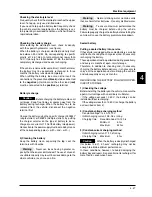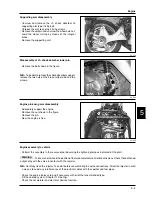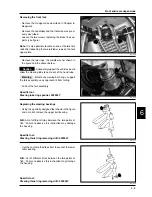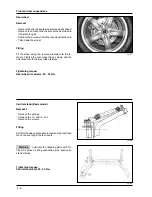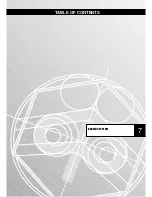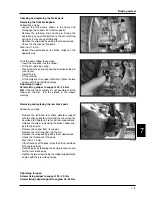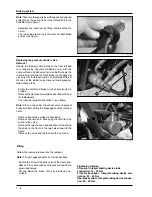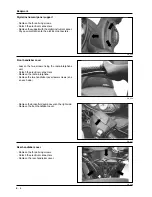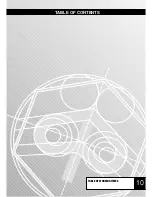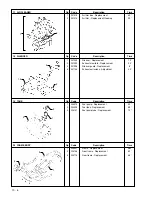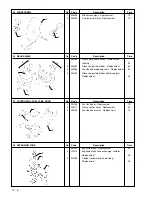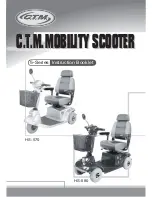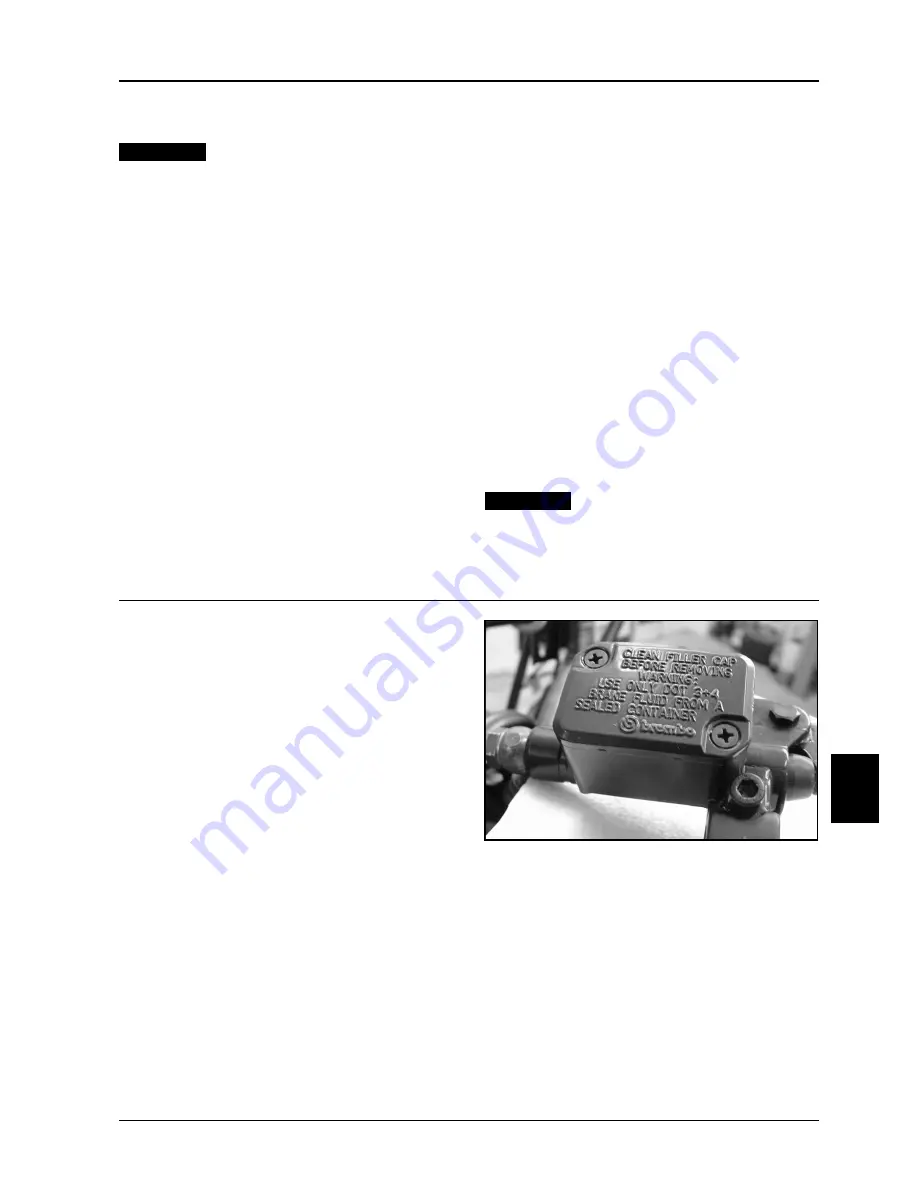
7 - 5
7
Braking system
07_008
General guidelines for servicing the hydraulic brak-
ing system
- The brake fluid is corrosive. Always
wear protective gloves when working on the hydraulic
system. In case of contact with the eyes, rinse gener-
ously with water.
The used brake fluid is harmful to the environment.
Collect and dispose of used oil according to the regula-
tions in force.
Note
: When topping up or renewing the brake fluid, only
use DOT4 - NHTSA 116 fluid.
Always ensure that all parts are perfectly clean.
The brake fluid is highly corrosive. Take care not to spill
it on painted surfaces.
The brake fluid is hygroscopic, i.e. it absorbs humidity
from the air. If the humidity contained in the fluid
exceeds a given concentration, the braking action be-
comes insufficient owing to a reduction in the boiling
point of the liquid.
Note
: Always take the brake fluid from sealed contain-
ers.
Caution
Under normal climatic and riding conditions the brake
fluid should be renewed every two years. However, if
the brakes are subjected to heavy stress the fluid
should be renewed at shorter intervals.
When reassembling, reused parts should be perfectly
clean and free from oil, diesel fuel and grease. It is
therefore necessary to thoroughly clean them with
denatured alcohol. Braking system.
Note
: Rubber parts must not be left immersed in alcohol
for longer than 20 seconds. After the washing, dry the
parts with a compressed air jet and wipe them with a
clean cloth.
Seal rings must be immersed in the liquid of use. The
use of the PRF1 protective agent is permitted.
- The braking action is decreased if brake
fluid is present on the brake discs or pads. Should the
discs and the pads become contaminated with brake
fluid, replace the pads and clean the disc with a good-
quality solvent.
Caution
Renewing the brake fluid and bleeding air from
the brake circuit
Front brake
Follow these steps:
1)
Put the vehicle on the stand on level ground.
2)
Remove the brake fluid pump reservoir cap as
described in Chapter 8-Bodywork.
3)
Remove the two screws shown in the figure and
open the front brake fluid reservoir.
4)
Using the bleeder screw on the brake caliper,
empty the brake circuit through a pipe of suitable
diameter.
5)
Collect the used fluid in a suitable container.
6)
Operate the brake pump until all the fluid has come
out.
7)
Close the bleeder valve.
8)
Fill the circuit reservoir to the maximum level with
fluid of the prescribed type.
9)
Attach the pipe of the specific tool (Mityvac-type
manual pump) to the bleeding connection.
10) While acting on the bleeder with the specific tool,
constantly pour fresh fluid into the reservoir so as to
avoid sucking in air. Stop pumping as soon as the
fluid flows out of the bleeder with no air bubbles.
11) Tighten the bleeder screw with the prescribed
torque.
Tightening torque:
Drain screw: 12 - 16 N·m
Summary of Contents for X9 500 cc
Page 7: ...TABLE OF CONTENTS SPECIFIC TOOLING 2...
Page 17: ...TABLE OF CONTENTS ELECTRICAL EQUIPMENT 4...
Page 34: ...TABLE OF CONTENTS ENGINE 5...
Page 43: ...TABLE OF CONTENTS BRAKING SYSTEM 7...
Page 51: ...TABLE OF CONTENTS BODYWORK 8...

